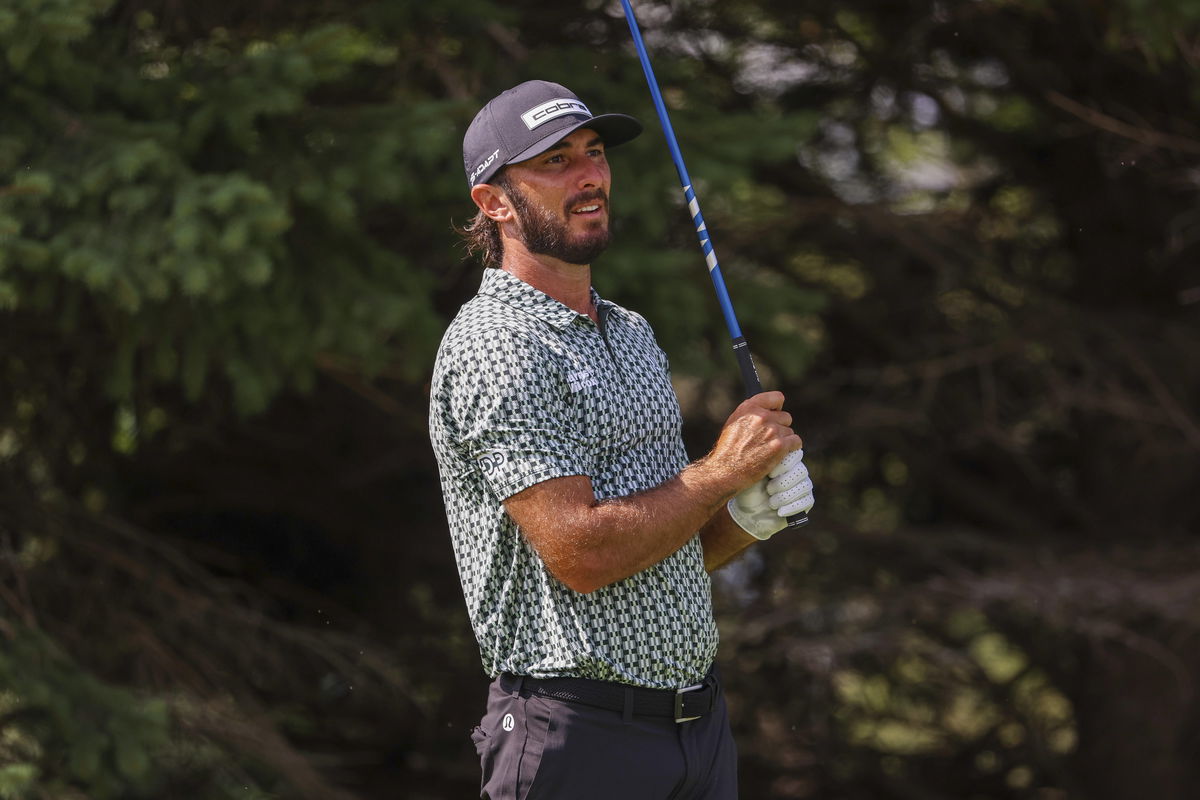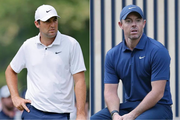
Imago
July 26, 2025, Blaine, Minnesota, United States: MAX HOMA watches his drive at hole two on the third day of competition at the 2025 PGA, Golf Herren 3M Open at TPC Twin Cities. Blaine United States – ZUMAt166 20250726_zsp_t166_017 Copyright: xMichaelxTurnerx

Imago
July 26, 2025, Blaine, Minnesota, United States: MAX HOMA watches his drive at hole two on the third day of competition at the 2025 PGA, Golf Herren 3M Open at TPC Twin Cities. Blaine United States – ZUMAt166 20250726_zsp_t166_017 Copyright: xMichaelxTurnerx
Only 117,000 viewers watched the final round of last year’s Black Desert Championship — a weak number for a PGA Tour Sunday, even in the FedEx Cup Fall. Still, the Tour is returning to southern Utah, banking on the drama of golf amid black lava fields and red cliffs. This year brings a new sponsor, a stronger field, a $6 million purse, and higher stakes — and tensions.
Watch What’s Trending Now!
The tension heading into year two lies in expectations. Last season, Black Desert Resort was a shiny newcomer on the schedule, designed by the late Tom Weiskopf. The same Weiskopf who has shaped what we know today, the TPC Scottsdale and Loch Lomond. But now, the novelty is off.
Now, the PGA Tour must prove that the Utah experiment can sustain momentum. Last time, it carried on some great numbers by critics. Golfweek ranked the course No. 1 in Utah and among the top 100 modern courses in America. The same will be expected this time.
ADVERTISEMENT
The reason for such competent rankings is the course design. Black Desert resort sits just outside of St. George in the small community of Ivins. It was built across a prehistoric lava field. That place was so jagged and inhospitable that Weiskopf’s design partner, Phil Smith, described walking the site as “ankle-breaking work.” The 18-hole routing winds through fields of gigantic black volcanic rock, with wide, rumpled fairways. It’s more Hawaiian than a Utah desert, if you minus the oceanic view.
View this post on Instagram
This course’s brutality is also part reason why it is so compelling and so unpredictable. Zac Blair, last year, was mesmerized by how alien everything felt compared to other desert layouts. “The scenery out here is pretty insane. I think it’ll look amazing on TV and everything like that,” he says. His main concern, though, lies with the lava rock, which will not act as a hazard, but a hurdle where your ball can easily get lost. “Here, you’re not going to find it most of the time. Especially in the rocks,” he says.
ADVERTISEMENT
Last year’s inaugural winner, Matt McCarty, despite these hurdles, turned the event into a personal breakthrough. Back then, he was a recent Korn Ferry Tour graduate. In the final round, he was able to fire a 67 to finish 23-under par, three shots clear of Stephan Jaeger. McCarty’s eagle at the drivable par-4 14th was the ‘it’ shot that sealed the win for him. That was a moment that became emblematic of the course’s high-risk, high-reward nature.
Mike Weir, who was there when the course was evolving in its early days, said people will be “blown away” by the shape it has taken now. “It’s incredible how much better it’s gotten even in a short period of time. It’s like carpet out there, the fairways,” he told Golfweek.
ADVERTISEMENT
Jay Don Blake, a Utah native and former PGA Tour winner, echoed the same awe. A funny incident he recalled was how the people at first thought that the lava was imported to the ground for aesthetic effect. “They think they actually brought it in to create the golf course with lava rock…I mean, having the lava in this terrain, territory, a lot of the community didn’t even know this was even part of what it was going to be,” he said. For a course that many doubted could even exist on such rocky ground, its conditioning and playability have silenced skeptics.
“What they’ve done is make a spectacular golf course. It’s going to be — they’ve got bigger dreams that go way beyond my imagination,” added Blake.
Still, television viewership will be the key measure of success this time, especially since notable players like Max Homa and Lanto Griffin will be preparing to tee off. In a golf calendar that is already crowded, another event being added surely might have raised several eyebrows. Elite players have already put forth their concerns before. So it remains to be seen how the event will unfold.
ADVERTISEMENT
And if it gets successful, then there are other major plans, too, that the officials have held for this course.
Top Stories
PGA Tour Injury Report: Viktor Hovland Drops Recovery Update Before New Season Kicks Off

Scottie Scheffler & Rory McIlroy Fans Lock Horns as PGA Tour Nominates Them for Top Honor

Paige Spiranac Opens Up on ‘Anxiety’ Struggles That Ended Her Professional Golf Career

Tiger Woods Unwilling to Let Charlie Woods Down as He Makes Tough PNC Championship Decision

Golf Veteran, 90, Pays Emotional Tribute to Fuzzy Zoeller Days After His Passing

A larger vision for the lava-laden course
For Tom Weiskopf, who sadly died two years before the PGA Tour discovered the venue, this project was a labor of love and grit. His widow, Laurie, recalled how he once came with bloodied hands after falling into one of the lava rocks. “The whole thing was scary for me,” she told Golfweek. “He fell more than once. I sent him out with the best boots, but he came home with blood all over his hands, and I had gloves for him the next day. But I knew he wasn’t going to stop. For him, this wasn’t work. Well, most of the projects weren’t work.” There’s a fine line if you want his legacy to turn into an honor rather than a burden.
ADVERTISEMENT
The business side of the Black Desert is equally ambitious. Managing partner Patrick Manning, who is a veteran real estate developer, wants the property to eventually turn into a full-blown entertainment hub. “We want it to evolve,” he told Golfweek last year. “…And then if a concert venue makes sense, then we’ll go out and test and see if the community and the state want it. And if they do and it makes sense, then we’ll build it.”
For Manning, the fact that the PGA Tour is coming back will act as a validation for his luxurious golf destination plan.
ADVERTISEMENT
ADVERTISEMENT
ADVERTISEMENT

.png?w=50&h=50)
